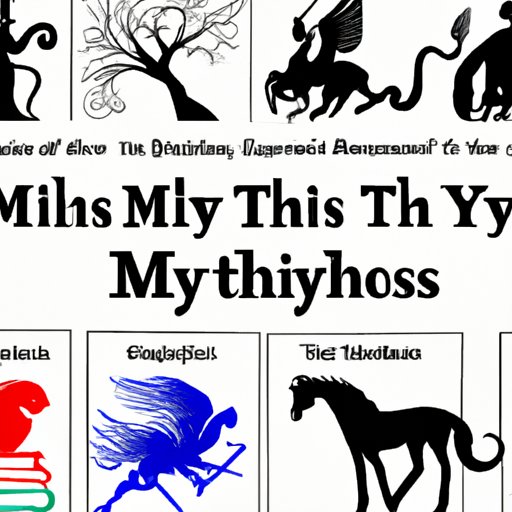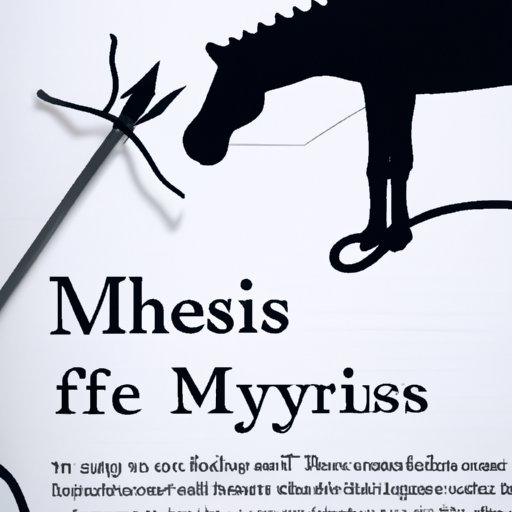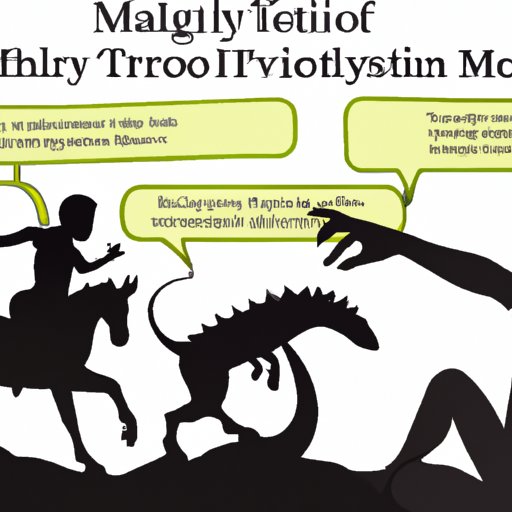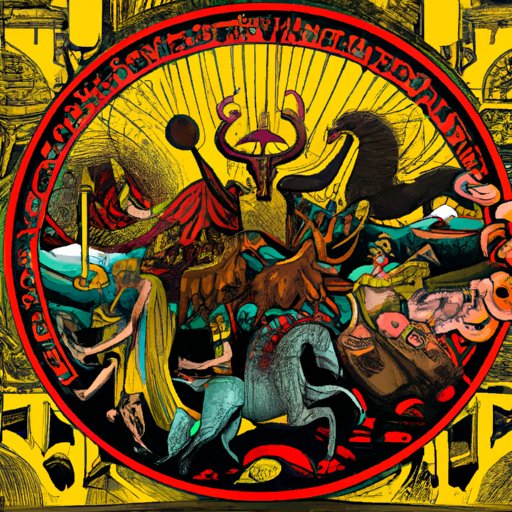Introduction
Myths have been around since the dawn of time, appearing in cultures around the world in various forms. In literature, these stories are often woven into classic works, as well as modern fiction, providing an interesting and complex backdrop for the narrative. But what exactly is a myth in literature?
In a literary context, a myth is a story that contains elements of folklore, fantasy, and religion. These tales typically feature gods, goddesses, heroes, and other supernatural beings and events. Myths can be used to explain natural phenomena or cultural beliefs and customs, and they often serve as a moral lesson or warning.
In this article, we will explore the power and influence of myths in literature, from ancient classics to modern fiction. We will investigate how these stories shape characters and plot arcs, as well as the role of mythology in storytelling today.

An Overview of Myths in Literature: A Comprehensive Guide
Before we dive into the impact of mythology on literature, let’s take a look at what exactly is a myth.
What is a Myth?
A myth is a traditional story that explains the origins of the world and its people. It usually involves gods, goddesses, heroes, and other supernatural forces or creatures. Myths are often used to explain natural phenomena or cultural beliefs and customs. They may also serve as a moral lesson or warning.
Types of Myths in Literature
There are many different types of myths found in literature. Some of the most popular include:
- Creation myths – stories about how the world was created
- Hero myths – stories about a hero who faces great challenges and triumphs over them
- Trickster myths – stories involving a trickster figure who uses cunning and wit to outsmart others
- Animal myths – stories featuring animals as main characters
- Nature myths – stories about natural elements such as the sun, moon, and stars
- Flood myths – stories involving a great flood that wipes out humanity
Exploring the Power and Influence of Mythology on Literature
Myths have long been used in literature to provide a backdrop for stories. They can help to explain the motivations and goals of characters, as well as provide insight into the themes and messages of the narrative. Let’s take a look at how myths shape some of the greatest literary classics.
How Myths Shape Literary Classics
Many of the world’s most famous works of literature draw heavily from mythology. For example, Homer’s epic poem The Odyssey is based on Greek mythology, and features gods, goddesses, and other mythical creatures. Similarly, Virgil’s Aeneid draws on Roman mythology, while Dante’s Divine Comedy incorporates both Greek and Roman mythology. Shakespeare’s plays also make use of classical mythology, with characters such as Hermes in A Midsummer Night’s Dream and Juno in The Tempest.
The Impact of Mythology on Storytelling
Myths can be used to add depth and complexity to a story. They can provide a familiar framework for readers to understand the characters and their motivations. Myths can also be used to explore themes such as love, loyalty, courage, and justice. By incorporating elements of mythology into a story, authors can create powerful and compelling narratives.

Investigating the Role of Myths in Modern Fiction
Myths continue to play an important role in modern fiction. Let’s take a look at how authors are using mythology to create new and exciting stories.
Mythological Characters in Contemporary Fiction
Many contemporary novels and films draw on classical myths. For example, Rick Riordan’s Percy Jackson series follows a young demigod as he embarks on a quest to save the world. Neil Gaiman’s American Gods reimagines gods and goddesses as modern-day characters, while J.K. Rowling’s Harry Potter series features magical creatures such as centaurs, giants, and merpeople.
Adaptations and Reimaginings of Classical Myths
Authors are also exploring new ways to tell old stories. For example, Madeline Miller’s Circe and The Song of Achilles reimagine classic myths from the perspective of female characters. Margaret Atwood’s The Penelopiad retells the story of Odysseus from the point of view of his wife, Penelope. And Marlon James’ A Brief History of Seven Killings reimagines the assassination of Bob Marley as a mythical quest.

Examining the Impact of Mythological Characters on Storytelling
Mythological characters can have a profound impact on storytelling. Let’s take a look at how they shape characters, plot arcs, and symbolism.
Character Development and Plot Arcs
Mythological characters can help to develop characters and advance the plot. For example, Hercules’ quest for redemption in Greek mythology serves as a model for Harry Potter’s journey from an unpopular student to a hero. Similarly, Circe’s transformation from a powerless witch to a powerful goddess in Madeline Miller’s novel reflects her character development throughout the story.
Symbolism and Allegory
Myths can also be used to explore deeper themes and meanings. For example, the myth of Pandora’s Box serves as an allegory for the consequences of curiosity. Similarly, the myth of Icarus serves as a warning against hubris and pride. By incorporating elements of mythology into a story, authors can create powerful symbols and metaphors.
Conclusion
Myths have long been used in literature to provide a backdrop for stories. From ancient classics to modern fiction, myths have shaped characters, plot arcs, and symbolism. They can be used to explore deeper themes and messages, as well as provide a familiar framework for readers to understand the characters and their motivations. Through the use of mythological characters and stories, authors can create powerful and compelling narratives.
Summary of Key Points
In this article, we explored the power and influence of myths in literature. We discussed the definition of a myth, as well as the various types found in literature. We examined how myths shape literary classics, as well as their role in modern fiction. Finally, we looked at how mythological characters can impact character development, plot arcs, and symbolism.
Final Thoughts
Myths have been around since the dawn of time, providing an interesting and complex backdrop for stories. Whether it’s a classic work of literature or a modern novel, myths can be used to explore deeper themes and messages, as well as create compelling characters and plot arcs.
(Note: Is this article not meeting your expectations? Do you have knowledge or insights to share? Unlock new opportunities and expand your reach by joining our authors team. Click Registration to join us and share your expertise with our readers.)
